Meet the Prospects: Running Backs
The running back position has never been valued less in professional football. A combination of spread passing schemes and effective committee-based rushing attacks sent the "bell-cow back" the way of the dodo.
Today's NFL general managers view running backs as disposable, interchangeable parts best used up and then discarded without a second thought. Running backs no longer get big contracts (look at the minuscule deals given to this year's class of free agent running backs for proof) and they aren't worth early draft picks.
No running backs were selected in the first round of last year's draft - the first time that's happened since the modern draft began - and it could happen again this year.
Ironically, however, there are few players available in the 2014 draft with the potential to impact their new teams' immediate fortunes more than the running backs. No position makes such a rapid, seamless transition to the pros and no position outside of quarterback touches the ball so frequently. Last year's crop of rookie rushers, including Eddie Lacy, Zac Stacy and Giovani Bernard, were all deserving Rookie of the Year candidates (and they carried teams to fantasy football championships, too).
Who among this class of tailbacks has the best chance of hearing his name called early in the draft? Who is destined for a situation ripe for fantasy production? Let's find out.
10. Lache Seastrunk, Baylor
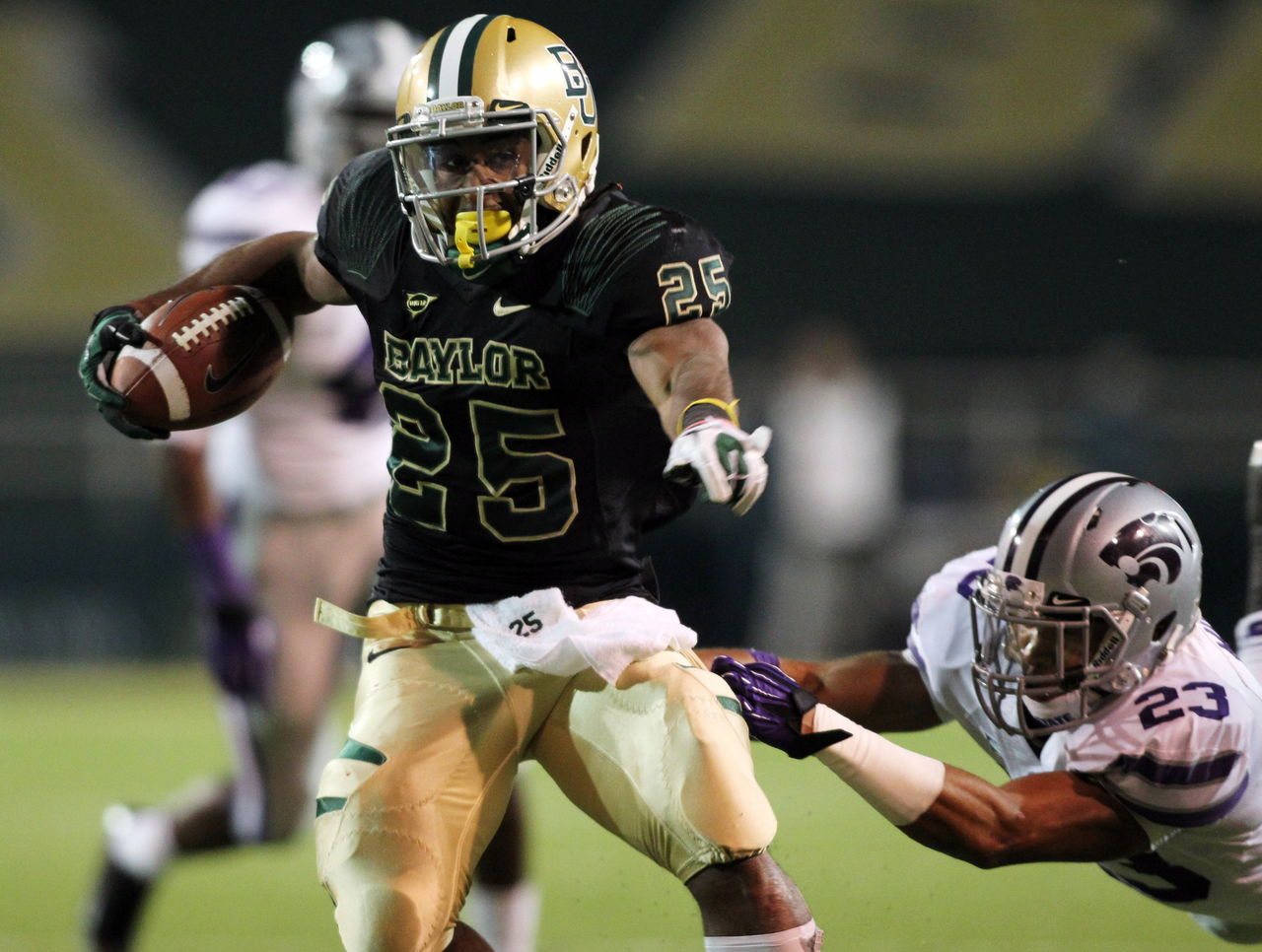
Measurables
- 5'9"
- 201 lbs.
- 4.51 speed
Strengths
Seastrunk is nimble and runs with good balance. He gets low to the ground and can gain extra yards by using his low center of gravity and keeping his feet churning.
Seastrunk's vision is one of his best attributes. He exploits cutback lanes and can make defenders miss with an impressive stop/start move.
Weaknesses
A lack of size is the biggest knock on Seastrunk. His usage will have to be limited in order to minimize the wear and tear on his body.
Additionally, there are concerns that Baylor's prolific offense vastly inflated Seastrunk's statistics. He frequently benefited from large holes that simply won't exist in the NFL, as well as east-west sweep plays that rarely work in the pros.
Seastrunk was rarely used as a receiver in college, and there are legitimate questions about his ability to fill that role on a team's offense as a pro.
NFL player comparison: Kendall Hunter
Ideal fit: Tennessee Titans
How high Seastrunk is drafted could depend on whether teams project him as a capable receiving back. He could easily fall to the fourth round or later. He would fit nicely with a team like the Tennessee Titans, who have made it clear they are moving on from Chris Johnson, as the "lightning" to Shonn Greene's "thunder."
9. Devonta Freeman, Florida State

Strengths
Freeman is a decisive, efficient runner who finds yards where other running backs may not because he wastes very little effort and energy in finding the hole, squeezing through and heading upfield.
Freeman runs with good balance and pad level. He is deceptively elusive.
He is durable, never missing a game in his college career. He is excellent in pass protection.
Weaknesses
Freeman accelerates quickly, but he lacks a top gear that would allow him to consistently turn open space into long runs.
He is not known for running with power, though he certainly doesn't shy away from contact. When Freeman reaches the line and fails to find a hole, he can be stuffed for a loss.
NFL player comparison: DeAngelo Williams
Ideal fit: Baltimore Ravens
Freeman's running style makes him a fit for almost any blocking scheme, but his ability to find the hole and get upfield in a hurry could help him excel in new Baltimore Ravens offensive coordinator Gary Kubiak's zone-blocking scheme. Running back is a bigger need for the Ravens than many realize - Ray Rice and Bernard Pierce were very disappointing last season - and the team could choose to invest a pick in the fourth- to fifth-round range on the position.
8. Andre Williams, Boston College
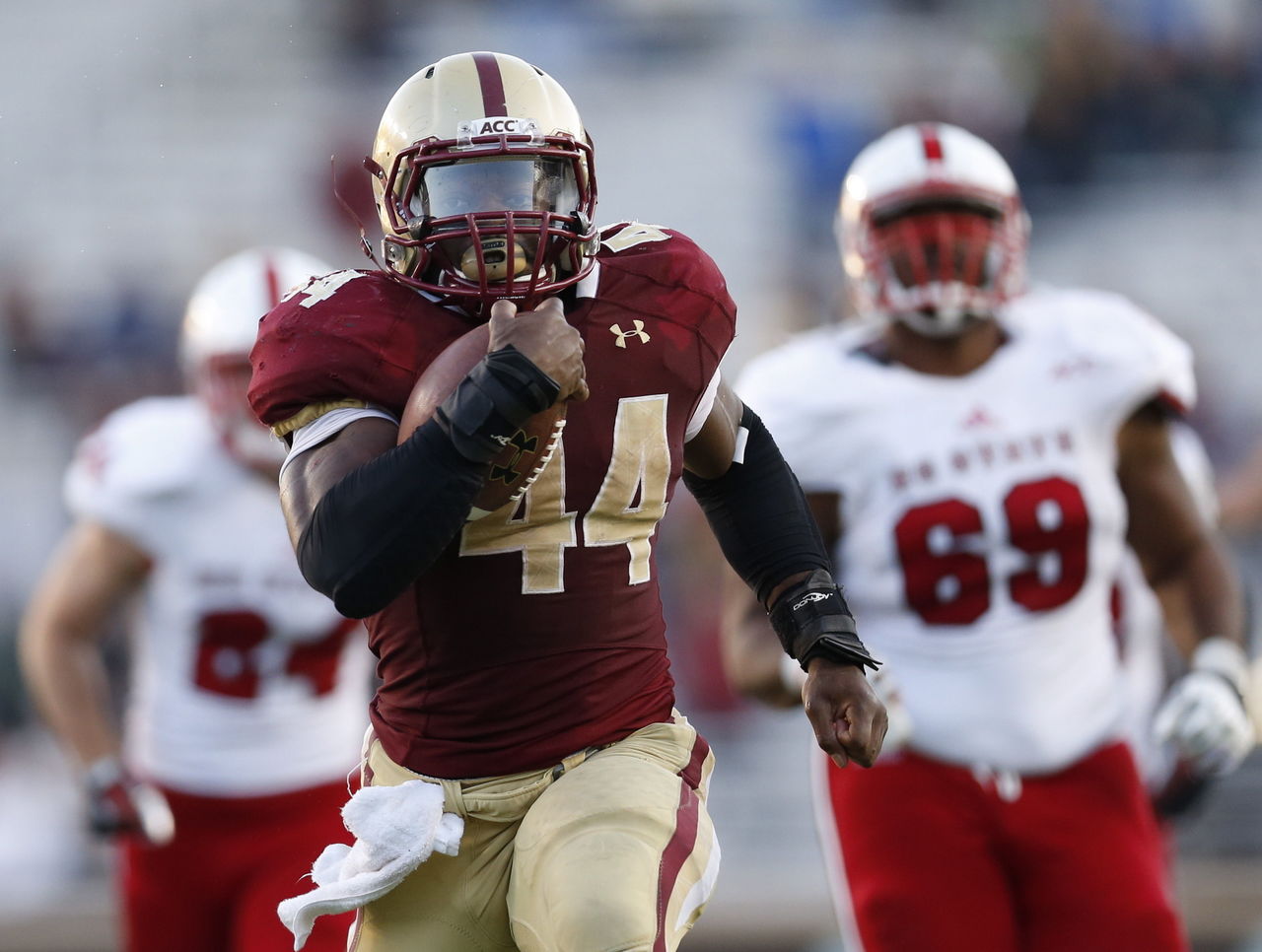
Measurables
- 5'11"
- 230 lbs.
- 4.56 speed
Strengths
Williams was a first-team All American in 2013 and finished fourth in Heisman voting. He led the nation with 2,177 yards rushing, becoming just the 16th FBS player to top 2,000 yards in a season.
Williams' physique is that of a prototypical workhorse running back. He's strong in the legs and upper body, and ideally built to absorb a pounding.
He demonstrates an ability to find another gear when he gets the ball in space. He's rarely caught from behind.
Weaknesses
Williams benefited greatly from good blocking on college. It's unclear if he can generate yardage when he isn't faced with wide open running lanes.
Williams isn't a "special" runner who will show creativity on the field or force missed tackles. He gets what's blocked and not much more. He offers very little value as a receiver.
NFL player comparison: Alfred Morris
Ideal fit: Bills
Fred Jackson is 33 years old and won't be able to fend off Father Time much longer. Williams' abilities could provide a nice complement to what starter C.J. Spiller brings to the table. A fourth-round pick is likely all it will take to secure him.
7. Isaiah Crowell, Alabama State
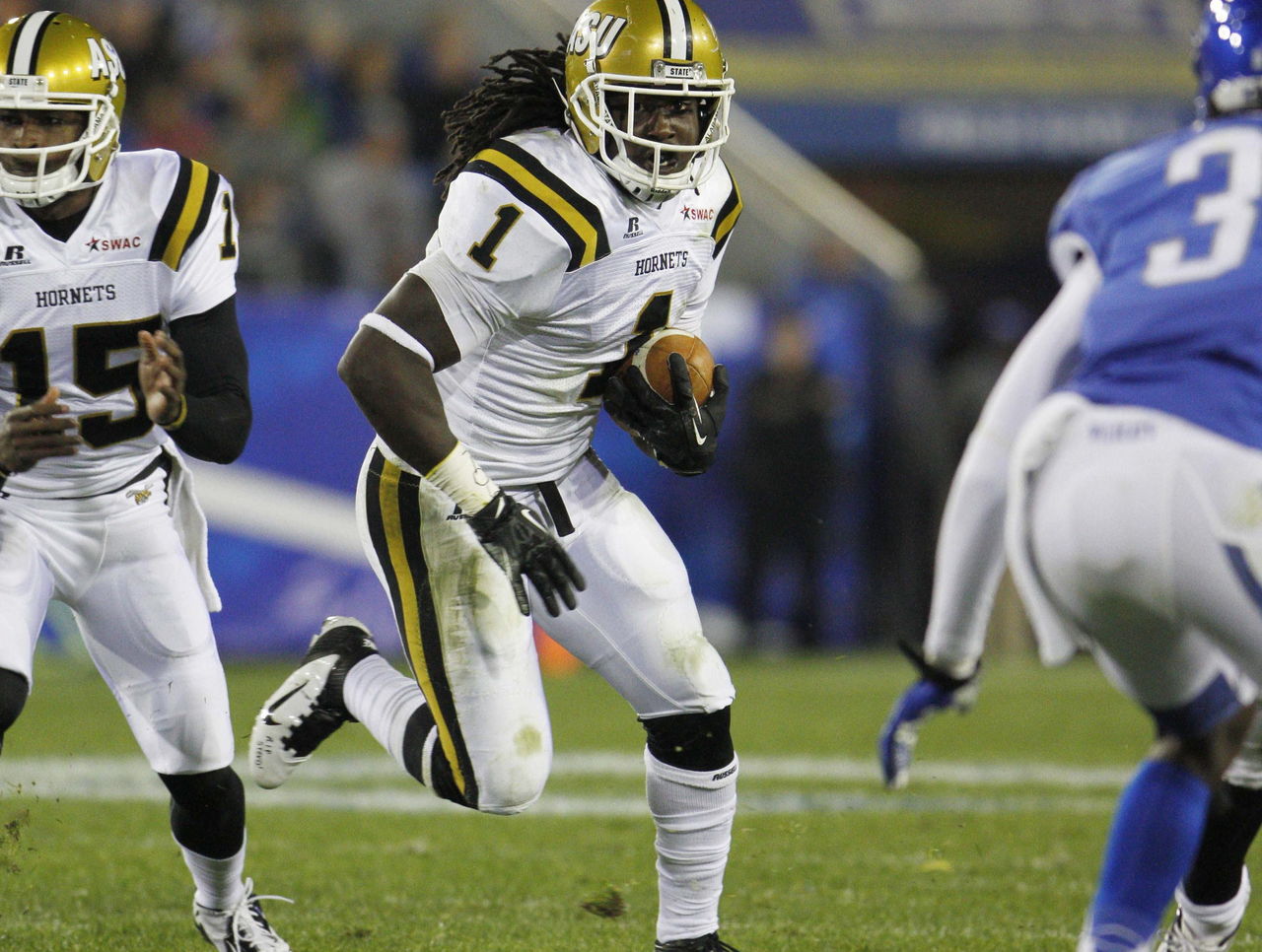
Measurables
- 5'11"
- 224 lbs.
- 4.57 speed
Strengths
Crowell is a fast, violent runner. In terms of raw skills, he may be the top back in this class. He changes direction on a dime and displays the balance necessary to bounce off hard tackle attempts without losing his stride.
Crowell's strong vision and efficient footwork come together seamlessly. He changes stride length to maintain balance and optimize his burst through the hole. When he hits the open field, he displays above-average breakaway speed.
Weaknesses
Like several others higher on this list, Crowell has character concerns. Unlike the others, his were severe enough to get him kicked off his college team.
Crowell was dismissed by Georgia following his freshman season as the result of felony weapons charges (that were later dismissed) and a failed drug test. Rather than spending a year in junior college before joining another FBS program, the 2011 SEC Freshman of the Year chose to transfer to FCS-level Alabama State and feast on weak defenses for the remainder of his college career.
There are rumors Crowell is hardheaded and doesn't take well to coaching. Additionally, there are suggestions that he removed himself from games after suffering minor injuries that players are typically expected to play through.
NFL player comparison: Marshawn Lynch
Ideal fit: St. Louis Rams
Crowell's red flags will push him much further down in the draft than his talent warrants. A team like the Rams, with a coaching staff that has demonstrated a willingness to take risks on players with character concerns, would be wise to use a fourth- or fifth-round selection on him.
6. Ka'Deem Carey, Arizona

Measurables
- 5'9"
- 207 lbs.
- 4.70 speed
Strengths
Carey is a smooth, elusive cutback runner who lacks long speed but can force missed tackles with his slippery style.
Carey is durable and has proven to be a consistent producer. He posted 16 consecutive games with at least 100 rushing yards to close out his college career.
Carey has soft hands and can contribute by catching passes out of the backfield. He's a strong pass blocker, so there's no reason for him to come off the field on third downs.
Weaknesses
The biggest knock on Carey is his lack of timed speed. He ran a slow 40-yard dash at the combine and then another slow 40 at his pro day. He doesn't look nearly as slow on game film as he did on the track, but his 4.70 time could scare a lot of teams off. Slow scatbacks aren't exactly in high demand in today's NFL.
Additionally, there are concerns Carey's numbers may be inflated by an Arizona offense that was very friendly to running backs.
NFL player comparison: Ray Rice
Ideal fit: Miami Dolphins
The Dolphins aren't in need of a flashy talent at running back; they need a player they can feel comfortable rolling with play after play, week after week. Neither Lamar Miller nor Daniel Thomas is that player. Using a third-round pick on Carey would be a wise move for new Dolphins general manager Dennis Hickey.
5. Charles Sims, West Virginia

Measurables
- 6'0"
- 214 lbs.
- 4.48 speed
Strengths
Sims is a fantastic receiver, possessing soft hands and an ability to find yards after securing the catch. He's so good catching passes out of the backfield that some teams may wish to use him primarily as a third-down back.
Sims' initial burst is one of his best attributes. His first-step quickness allows him to beat defenders to a spot. He might be the best pass protector in this class.
Weaknesses
Sims' body type is worrisome. His thin legs raise concerns about his ability to absorb the punishment required to play the position in the NFL.
He is also too easily tackled by the first defender he meets in space. He needs to improve his power at the point of contact.
NFL player comparison: Darren McFadden
Ideal fit: Falcons
The Falcons have a power back on their roster in Steven Jackson, but Jackson is 30 and there's a lot of wear and tear on his tires. Sims would represent a significant upgrade over Jacquizz Rodgers as the Falcons' change-of-pace back and would likely usurp Jackson's role as starter before the season's end. He's worth a second-round pick, but could fall to the third or fourth round because of the ongoing devaluation of running backs.
4. Bishop Sankey, Washington

Measurables
- 5'9"
- 209 lbs.
- 4.49 speed
Strengths
Sankey demonstrates excellent vision and ability to read his blocks. He's a strong cutter who runs with quick feet and good burst.
Sankey is an instinctive runner with good balance. Despite Sankey's relatively small frame, he's effective running between the tackles. Sankey is able to avoid taking big hits and has proven to be a durable player.
He is a strong receiver out of the backfield, as well as a willing and capable pass protector.
Weaknesses
Sankey lacks strengths as a runner. Far too often, he is taken to the ground by the first tackler he meets at the line. His straight-line speed is good, but he runs with stiffness in his hips and sometimes has a hard time finding enough space to hit his top gear. Sankey's pass protection needs some improvement.
NFL player comparison: Giovani Bernard
Ideal fit: Jacksonville Jaguars
The Jaguars' depth chart at running back is as barren as any team's. Denard Robinson is an intriguing player and Jordan Todman is an acceptable backup, but Sankey would enter camp as the most talented member of the team's rushing attack by a significant margin. The Jaguars pick at the top of the third round and could be right in the sweet spot to lock him up.
3. Tre Mason, Auburn
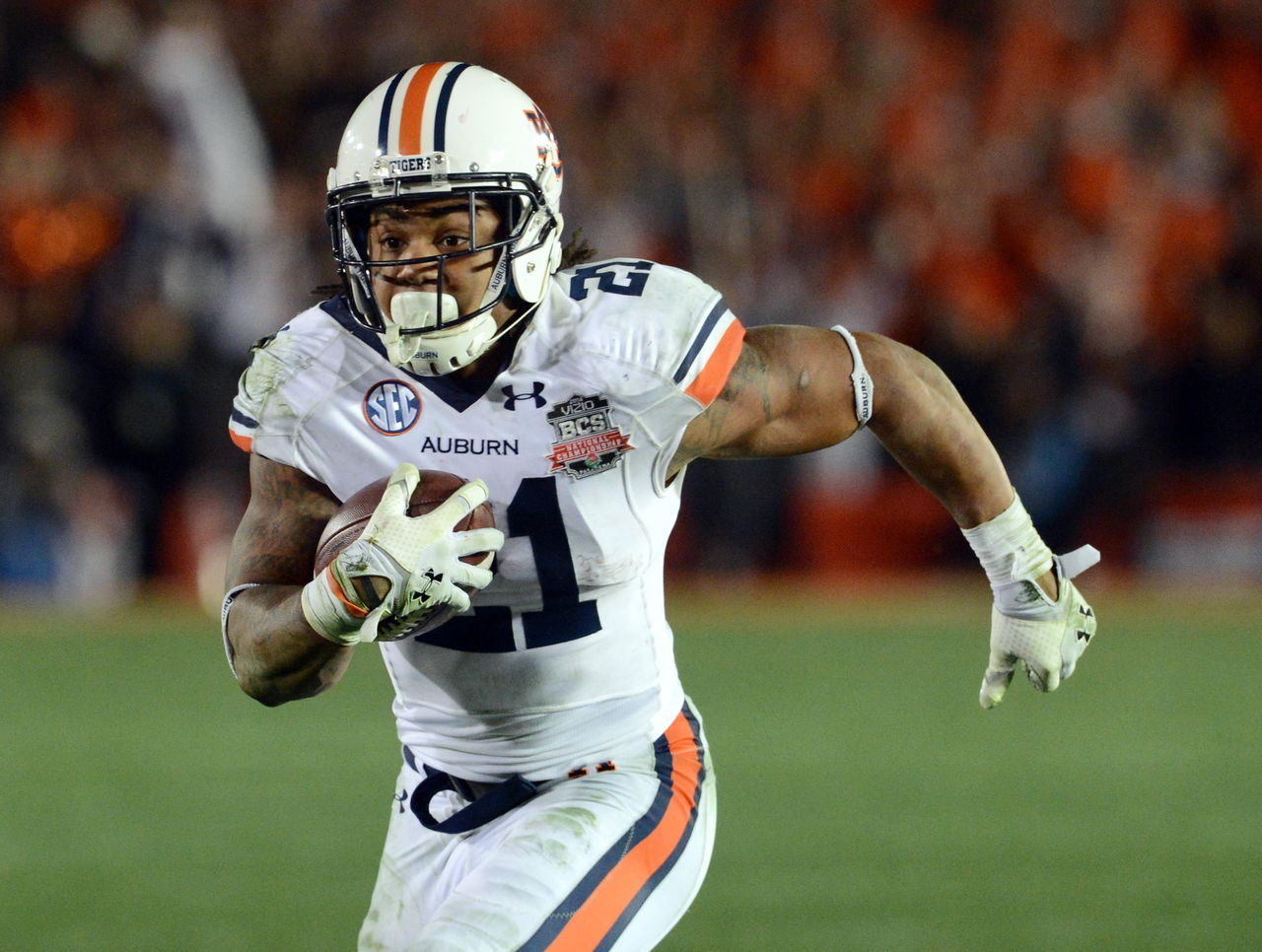
Measurables
- 5'8"
- 207 lbs.
- 4.50 speed
Strengths
Mason runs with quick feet, good balance, a low pad level and low center of gravity.
Mason's initial burst is good. His shiftiness while running at full speed is better. His arsenal of moves includes a jump-cut juke that has made more than a few defenders miss.
Mason is not a power back, but he runs with impressive physicality. He fights for extra yards. He's at his best in big games.
Weaknesses
Mason lacks ideal size for a running back. He could be limited to a change-of-pace role as a pro, as there are some concerns about his durability.
Fumbles are a bit of an issue with him, as he put the ball on the turf eight times in two seasons.
Mason must refine his pass protection abilities as a pro. Likewise, he must improve as a receiver or he will be limited to a role on early downs.
NFL player comparison: Marion Barber
Ideal fit: Dallas Cowboys
Mason should expect to hear his name called as a third-round pick. A team like the Cowboys, with an established starter (DeMarco Murray) who has proven to be unable to handle a full workload would benefit greatly from adding Mason to its offensive arsenal.
2. Jeremy Hill, LSU
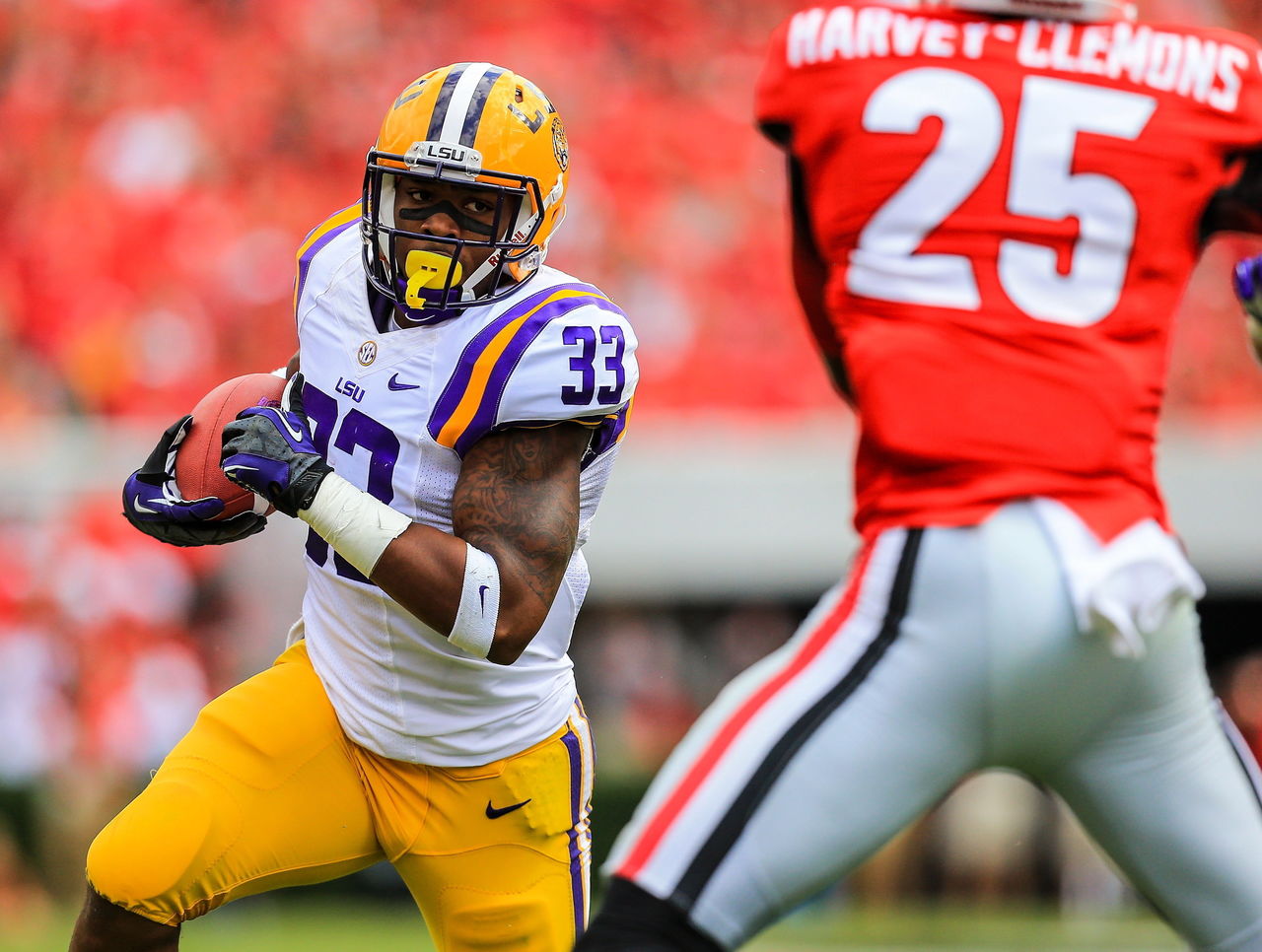
Measurables
- 6'1"
- 233 lbs.
- 4.66 speed
Strengths
Hill is a decisive one-cut runner who attacks holes with quick feet and doesn't shy away from contact. He runs strong through first contact and, though he lacks elite long speed, can break away from defenders when he reaches the second level.
Hill has the power to move the pile and churn out tough yards. He should excel in goal-line formations.
He is also a natural receiver who demonstrates soft hands hauling in short passes. He also has a penchant for flashing impressive athleticism and hurdling over defenders who attempt to tackle him low in the open field.
Weaknesses
Hill's natural upright running style could leave him exposed to big hits from defenders. It also leaves him somewhat off-balance at times; he can lose his momentum when knocked off course by a defender. Hill occasionally struggles running laterally.
Hill carries significant character concerns. He has two arrests on his record (one for battery and one for a sexual act with a 14-year-old girl that occurred when he was in high school) and won't get off probation until 2015. Hill reportedly mailed a letter to all 32 NFL teams explaining his arrests that included pages of character references, so that could help mitigate some concerns.
NFL player comparison: Arian Foster
Ideal fit: Oakland Raiders
Watch for Hill to be selected late in the second round or early in the third round of the draft. He is a great fit for the blocking scheme utilized by the Raiders, and the team has a significant need at the position with Rashad Jennings leaving in free agency and Darren McFadden signed to just a one-year deal. The Raiders would be wise to consider trading into the late second to ensure they don't miss out.
1. Carlos Hyde, Ohio State
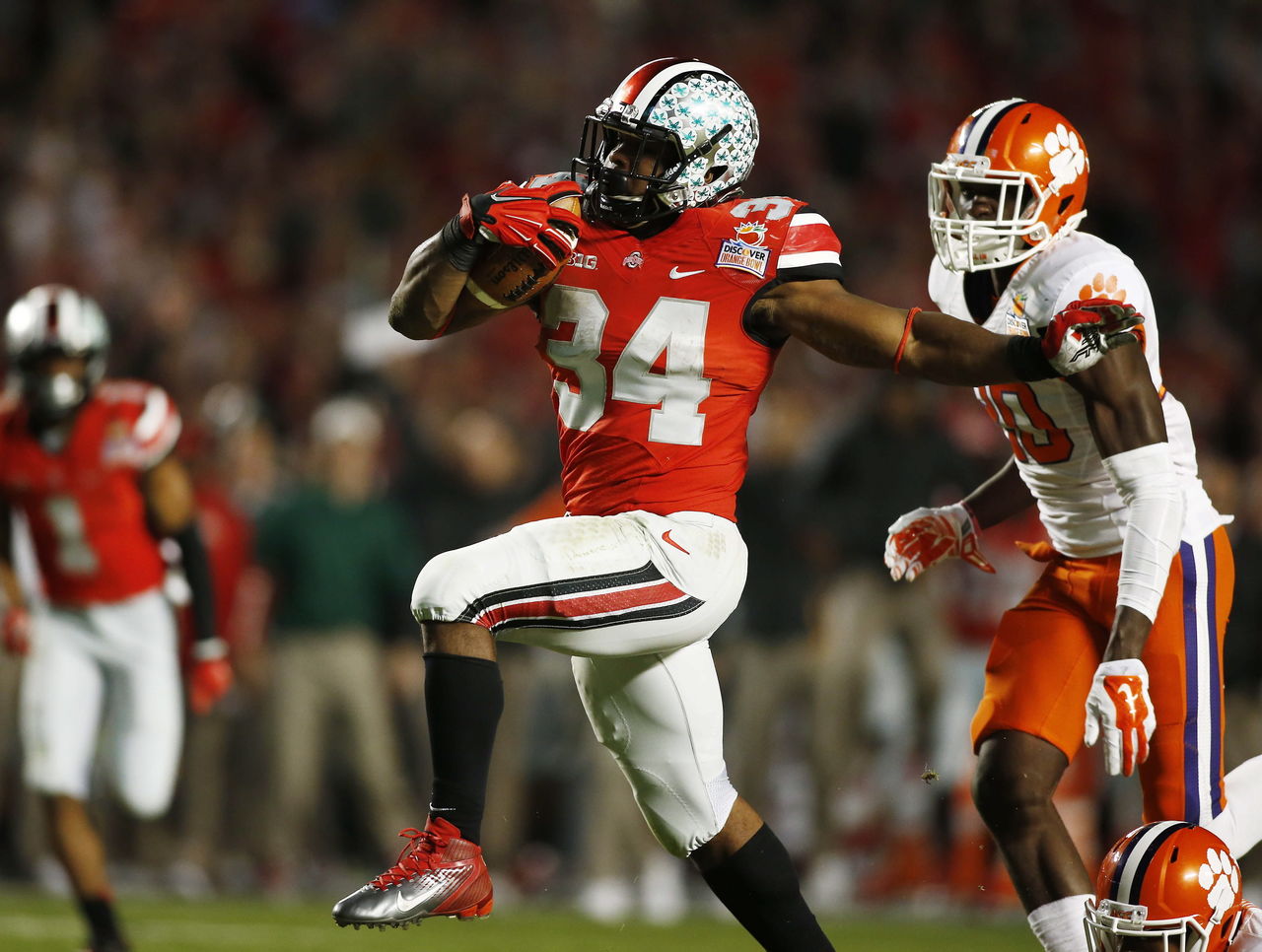
Measurables
- 6'0"
- 230 lbs.
- 4.66 speed
Strengths
Hyde is a prototypical north-south runner who will churn his legs and fall forward to gain an extra yard after first contact. He is a big-bodied back, but is surprisingly quick to accelerate considering his size and power. There is reason to believe Hyde's impressive physicality could be augmented with a better diet and training regimen.
Hyde is a back who will benefit from a full workload, as he often gets stronger as a game progresses and he gets into a rhythm. He is strong in pass protection and an adept receiver out of the backfield.
Weaknesses
Hyde's body type and skill set give him workhorse potential, but his old-school "three yards and a cloud of dust" running style may not be a fit for some of today's wide open offenses.
Hyde carries minor character concerns. He was suspended three games in 2013 for an altercation at a bar, though surveillance tape suggests the incident was relatively minor. No charges were pressed.
NFL player comparison: Frank Gore
Ideal fit: Cleveland Browns
Hyde is expected to be drafted in the second round, likely as the first running back off the board. The Cleveland Browns signed former Houston Texans running back Ben Tate in free agency, but Tate is best used in a committee attack.
Already a favorite of football fans in Ohio, Hyde would fit in nicely with the Browns. The team has two first-round picks, so using a second-round selection on a non-premium position is easy to justify.